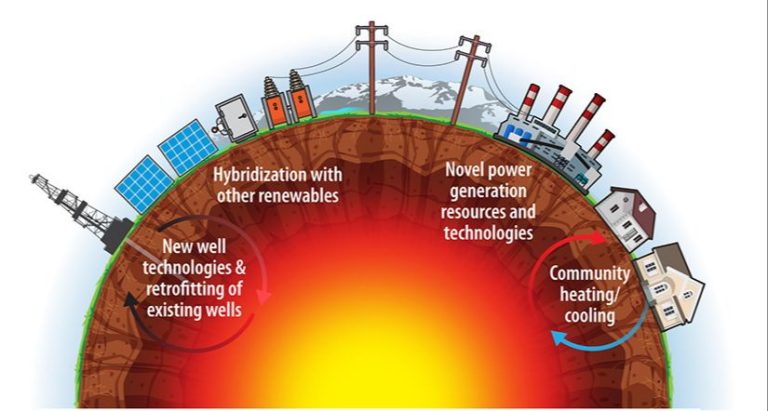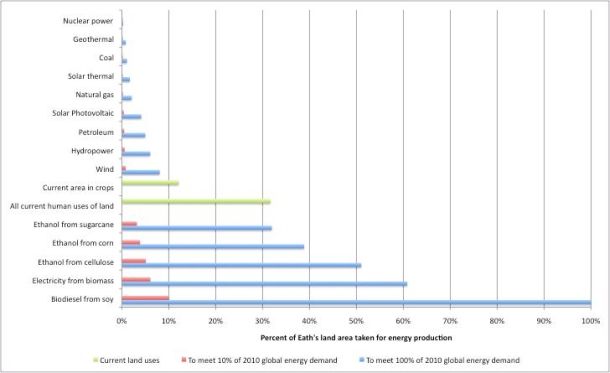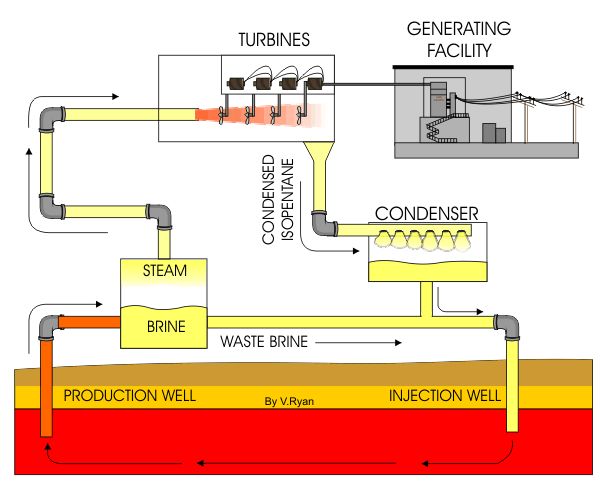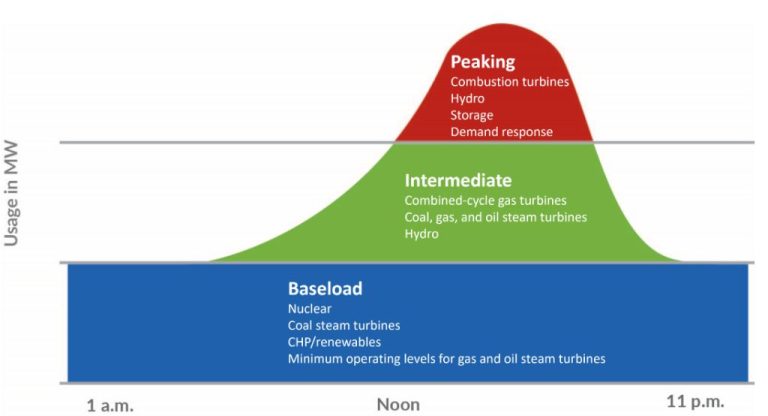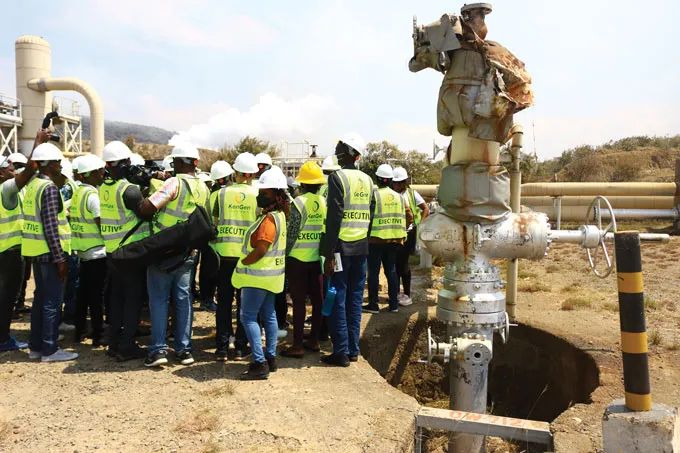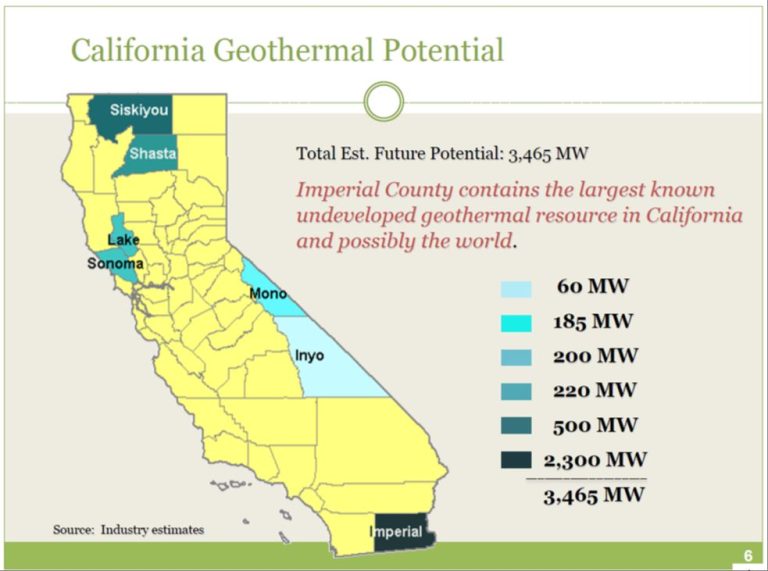Why Is Geothermal Called Sustainable Rather Than Renewable?
Geothermal energy is thermal energy generated and stored in the Earth (1). It is a clean, renewable energy source that relies on the natural heat within the Earth’s crust to produce steam and hot water that can be used to generate electricity or provide direct heating and cooling (1). The key difference between renewable and sustainable energy sources is that renewable focuses on the ability to replenish the source in a short period of time, while sustainable considers the long-term viability and environmental impact of that energy source (2,3). Though geothermal energy is considered renewable because heat is continuously produced inside the Earth, some argue it should be categorized as sustainable due to the need to manage extraction and avoid depletion of underground reservoirs (3).
Sources:
(1) https://www.energy.gov/eere/geothermal/geothermal-energy-clean-energy-source-future
(2) https://impactful.ninja/renewable-vs-sustainable-energy-differences/
(3) https://www.linkedin.com/pulse/difference-between-renewable-sustainable-energy-grn-energy
Geothermal Energy Overview
Geothermal energy is thermal energy generated and stored in the Earth (1). It arises from the original formation of the planet, from radioactive decay of minerals, and from solar energy absorbed at the surface (2). Geothermal energy is considered a renewable energy source because the heat emanating from the interior of the Earth is continuously replenished. However, areas that are suitable for geothermal power plants are limited.
There are three main types of geothermal energy plants: dry steam, flash, and binary. Dry steam plants use steam from reservoirs directly to turn turbines and generate electricity. Flash plants take high temperature fluid above 182°C from reservoirs, allowing some of the fluid to vaporize or “flash.” The vapor then drives a turbine. In binary systems, the reservoir fluid heats a secondary liquid with a lower boiling point in a heat exchanger. This causes the secondary liquid to flash to vapor and drive the turbine (1).
In all types, wells and pumps bring hot water or steam from deep underground reservoirs to the power plant. The geothermal fluid heats the water, producing steam that powers the generators and produces electricity. After it has passed through, the steam condenses into water and is injected back into the ground to be reheated (2). The areas best suited for geothermal power have heat reservoirs located 1-3 miles below the Earth’s surface (1).
Sources:
(1) https://www.eia.gov/energyexplained/geothermal/
(2) https://www.twi-global.com/technical-knowledge/faqs/geothermal-energy
Renewable vs. Sustainable
Renewable energy refers to energy derived from natural resources that replenish themselves over time, such as sunlight, wind, rain, tides, and geothermal heat. These energy sources are considered renewable because they are naturally replenished and virtually inexhaustible. Examples of renewable energy include solar power, hydroelectric power, wind energy, and biomass energy. The key aspect of renewable energy is that it comes from recurring natural flows of energy that are not depleted when harnessed or used (Energy Information Administration, 2022).
Sustainable energy refers to energy sources and systems that meet the energy needs of the present without compromising the ability of future generations to meet their energy needs. Sustainable energy sources include renewable energy sources and also techniques that improve energy efficiency and reduce energy consumption. While renewable energy is an important component of sustainable energy, sustainability also considers how we consume, distribute, and conserve energy. The emphasis of sustainability is on responsible stewardship of natural resources over the long term (US Department of Energy, n.d.).
In summary, the key difference between renewable and sustainable energy is that renewable energy focuses on the source being replenished naturally, while sustainability considers the long-term stewardship of resources, including renewables and efficiency improvements. Renewable energy is a subset of sustainable energy focused on replenishable sources (Renewable Energy World, 2020).
References:
Energy Information Administration. (2022). Renewable energy explained. https://www.eia.gov/energyexplained/renewable-sources/
US Department of Energy. (n.d.). Energy sustainability. https://www.energy.gov/eere/energy-sustainability
Renewable Energy World. (2020, September 15). Renewable vs sustainable energy: What’s the difference? https://www.renewableenergyworld.com/transition-hub/renewable-vs-sustainable-energy-whats-the-difference/#gref
Geothermal is Sustainable
Geothermal energy is considered sustainable rather than renewable because the heat from the Earth’s core can be available indefinitely if managed properly. The high temperatures deep underground provide an enormous reservoir of thermal energy that is not directly dependent on sunlight like wind and solar power. While solar and wind are renewal resources, the energy from the sun and wind is intermittent, whereas the Earth’s geothermal energy remains constantly available.
According to NetSol Water, geothermal plants are capable of operating at over 90% capacity 24/7 because the resource is always available. The key is using geothermal energy at a rate lower than the Earth’s natural heat flow so that the subsurface temperatures can be replenished over time. This allows geothermal systems to be operated indefinitely, making the energy supply sustainable.
Additionally, geothermal power does not rely on carbon fuels like coal, oil or natural gas that will eventually run out. The Earth will continue producing heat as long as additional heat is released from radioactive decay in the planet’s core. This makes geothermal energy sustainable for human timescales, unlike fossil fuels which are finite.
Managing Geothermal Resources
To ensure the sustainability of geothermal energy, proper management of geothermal reservoirs is crucial. Some best practices for managing reservoirs include:
Continuously monitoring reservoir performance through well tests, tracer tests, and modeling to assess changes in temperature, pressure, and flow rate. This allows for optimization of production and injection wells to maximize output.
Using 3D reservoir visualization and simulations to identify the best locations for new wells based on the subsurface resource. Visualization improves understanding of fracture networks and fluid flow in the reservoir.
Careful well placement and spacing based on the size and properties of the resource. This prevents premature cooling or depletion of the reservoir.
Reinjecting the geothermal fluid back into the reservoir after energy extraction. This helps maintain reservoir pressure and permeability.
Limiting production flow rates over time to match the estimated sustainable heat extraction level. Overproduction can damage the reservoir.
Using integrated data analysis and modeling to make informed reservoir management decisions. This optimization ensures long-term productivity.
Comparing to Other Renewables
Geothermal energy differs from other renewable sources like solar and wind because it relies on the Earth’s consistent internal heat rather than variable external resources. The core of the Earth maintains temperatures between 4,000-7,000°C due to residual heat from planetary formation as well as heat produced by radioactive decay (Chariot Energy). Unlike solar and wind power, which depend on inconsistent external factors like weather and daylight, geothermal energy is available consistently 24/7 because of the Earth’s perpetual internal heat. 1
One 2013 study comparing the sustainability of renewable energy sources found that wind power is the most sustainable, followed by hydropower and solar PV, with geothermal ranking lower. 2 However, the study noted geothermal stands out for its capacity to provide base load power, operating at 90% availability versus just 20-30% for solar and wind. So while other renewables rely on inconsistent external factors, geothermal provides reliable baseload power from the Earth’s perpetual internal heat.
Environmental Benefits
Geothermal energy has several important environmental benefits compared to conventional fossil fuel energy sources.
First, geothermal power plants emit little to no greenhouse gases. According to the U.S. Department of Energy, geothermal plants emit on average just 1/6000th of the carbon dioxide of a comparable coal-fired power plant (https://www.greenlivinganswers.com/alt-energy/geothermal-energy-environmental-benefits). This makes geothermal a clean, low-emission source of reliable baseload power.

Additionally, geothermal energy does not require the burning of fossil fuels to generate electricity. This means developing geothermal plants does not contribute to extraction, transportation, or combustion of coal, oil or natural gas. Geothermal can provide carbon-free energy with virtually zero emissions.
Geothermal plants also produce minimal air and water pollution. The steam emitted from geothermal facilities is mostly condensed water vapor with trace amounts of dissolved minerals and gases. With proper management, geothermal developments have negligible impacts on air and water quality.
Overall, geothermal power delivers reliable electricity with an extremely small environmental footprint. Its low-carbon, low-pollution profile makes it a sustainable solution as the world transitions to a cleaner energy mix.
Challenges and Limitations
While geothermal energy has many benefits, it also comes with some notable challenges and limitations:
Geothermal energy is geographically limited – it can only be harnessed in areas with suitable underground heat and water resources. Not all locations have access to viable geothermal reservoirs.1
High upfront capital costs – drilling geothermal wells and building power plants requires significant upfront investment, which can deter adoption.2 This is especially true for enhanced geothermal systems (EGS) which require advanced technology.
Potential seismic activity – if not managed properly, drilling and fluid injection can induce small earthquakes near geothermal sites. Mitigation strategies need to be employed.
Land subsidence – extracting large amounts of hot water/steam from a geothermal reservoir can cause the land above it to sink. This needs to be monitored and addressed.
Hydrothermal reservoir depletion – reservoirs need to be carefully managed to prevent overuse and depletion. Sustainable extraction rates must be determined.
High-temperature corrosion – geothermal fluids can be highly corrosive, requiring specialty materials/coatings for production equipment and pipelines.
Limited scalability – conventional hydrothermal systems are restricted to geologic hot spots, limiting how much geothermal electricity can be expanded in a given region.
Future Outlook
The future growth potential for geothermal energy looks promising as technology continues to advance. According to the Geothermal Energy Association’s latest projections, global geothermal power capacity is estimated to reach 21 GWe by 2030, up from 14 GWe in 2020 [1]. With improved technologies like advanced drilling techniques, enhanced geothermal systems (EGS), and binary power plants, previously untapped geothermal resources can be developed economically.
EGS specifically holds great potential for expanding geothermal energy globally by accessing hot dry rock resources. As the technology matures, EGS could provide 100 GWe or more of power generation capacity globally according to estimates [2]. Additionally, binary power plants can improve efficiency by 25-30% compared to conventional geothermal plants. With these kinds of technology improvements, the geothermal industry has significant room to grow in the coming decades.
Conclusion
Geothermal energy offers a sustainable solution for our long-term energy needs since it utilizes the constant heat within the Earth. Unlike solar and wind power which rely on intermittent resources, geothermal provides consistent baseload power independent of weather conditions or daylight hours. With proper management and site selection, geothermal reservoirs can provide steady power for generations with minimal environmental impact compared to fossil fuels. Though start-up costs are high, the ability to sustainably generate proven, reliable power establishes geothermal as an attractive option for communities seeking energy self-sufficiency and reduced carbon footprints. While geothermal cannot single-handedly meet all our energy demands, its unique advantages solidify its role as a sustainable component of our diversified clean energy portfolio now and into the future.

